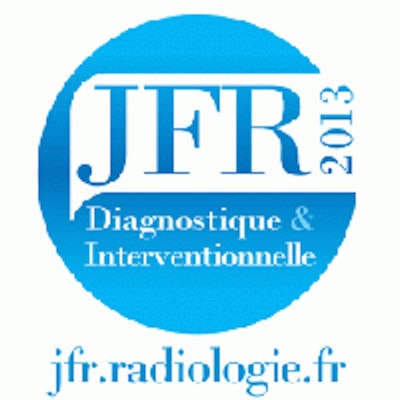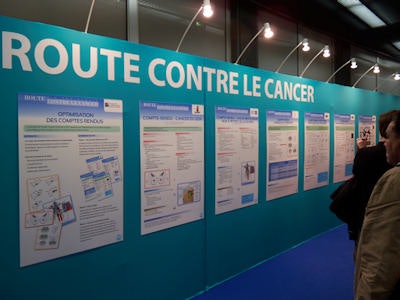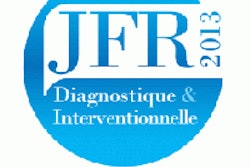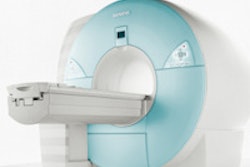
The chronic lack of MR machines and radiologists in France was again highlighted at the national radiology congress, Journées Françaises de Radiologie (JFR), this time in a thought-provoking discussion about cancer care.
Cancer imaging is the central theme of this year's congress, which ends tomorrow. The organizers, the French Society of Radiology (Société Française de Radiologie, SFR) and delegates were keen to learn about the views of Dr. Agnès Buzyn, PhD, president of France's National Cancer Institute (Institut National du Cancer, INCa) on the viability of relatively time-consuming multidisciplinary strategy meetings for cancer cases when the numbers of radiologists are diminishing across French hospitals.
They also sought to find out how the institute thinks cancer care can contend with the deficit in equipment levels to ensure optimal detection for all patients.
 Thousands of JFR delegates have enjoyed clear skies and mild autumnal temperatures in Paris during the past few days. All images courtesy of Dr. Robert Lavayssière.
Thousands of JFR delegates have enjoyed clear skies and mild autumnal temperatures in Paris during the past few days. All images courtesy of Dr. Robert Lavayssière.SFR wants the greater workload of increasing multidisciplinary meetings and case reviews to translate into the creation of extra posts necessary for the care of cancer patients, but in an interview article published in Friday's edition of the congress daily newspaper, Le Quotidien des JFR, Buzyn pointed to a shared burden of work felt by all stakeholders.
"Radiologists are indispensable in the multidisciplinary approach. If this strategy has to evolve as it evidently must under Cancer Plan III, this creates a problem in the direct financing of these tasks for all practitioners involved in these (multidisciplinary) activities," she commented.
Buzyn can foresee complete, integrated, and shared imaging platforms -- notably in MRI, PET, and PET/MRI -- as a means of combating the problem of lengthy patient waiting times for MR examinations in certain regions. In addition, PET/MRI, for example, could be used within the framework of a Hospital Program for Clinical Research in Cancer (Programme Hospitalier de Recherche Clinique en Cancerologie, PHRC) or in trials across several sites, as a means to evaluate and validate such technological innovations.
An increase in the number of MR units in the area of Nord Pas De Calais, for instance, has led to a drop in waiting times from 41 days in 2008 to 19 days in 2012 for cancer patients, but Buzyn stressed that inequalities in access to MRI stemmed from a number of different factors, and not solely MR scanner numbers. Despite efforts to shorten waiting times for MRI, they remained overall largely unchanged, despite a slight improvement between 2010 and 2011.
"The issues are complex because they involve the organization of workflow, the availability of organ specialists, and the fact that MRI is not a cancer-dedicated modality," she said.
To date, there was no established correlation between the level of regional equipment and delays in accessing it, as was shown in studies published in 2011 and 2012 by INCa and the Directorate General for Care Provision (Direction Générale de l'Offre de Soins, DGOS). "The regional delays measured are proxy indicators of inequalities facing cancer in the area of imaging. Measure 21.4 of Cancer Plan II helped to increase regional facilities at the national level, and targeted the 10 regions with the highest mortality rates," Buzyn added.
 Lively discussions about the future of cancer care have taken place at this year's JFR.
Lively discussions about the future of cancer care have taken place at this year's JFR.She was also asked about cancer screening programs: Could the national Cancer Plan III serve to advance lung and colon cancer detection through image-based screening? Substantial investments have been made in organized breast and colorectal screening activities, and in information campaigns destined to reach the target populations, but she said she was conscious of the risk of overdiagnosis in CT lung cancer screening.
"INCa would first like to work in high-risk populations such as heavy smokers in whom the five-year survival rate is not improving," Buzyn said. "For prostate cancer, however, there has been no new argument justifying a reopening of the debate on the existing negative risk/benefit ratio which led the Health Authorities to recommend no programmed screening for medium-risk patients."
INCa's strategy of identifying populations at risk could be reinforced through Cancer Plan III. In practical terms, this will mean introducing and developing a more personalized approach to disease, not only in detection but also in prevention through a concerted effort to identify populations at risk by assessing genetic, environmental, and behavioral risk factors and by using biomarkers.
"These are midterm objectives over the next five to 10 years, which in Cancer Plan III will comprise personalization and primary and secondary prevention goals," she said.
As part of Cancer Plan III, INCa wants to prioritize research in all fields related to cancer. Besides solving issues concerned with treatment, problems connected to diagnosis also were at the core of calls for projects undertaken in the framework of the PHRC.
"Radiologists have an important place in the development of knowledge about material and technologies, notably in dosimetry. All projects are welcome," Buzyn said.
She was also cautiously positive about the SFR's argument for developing clinical research associates (les attachés de recherche clinique, ARC) in cancer imaging, specifically in the domain of therapeutic evaluation, providing that training took place in the context of a classical clinical trial.
It is possible to envisage the implementation of specific training in clinical studies in the field of imaging, following the same model as those used to train nurses in their work as ARCs. INCa is willing to study the opportunity and feasibility of such a proposition, she concluded.



















